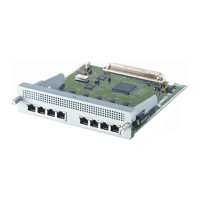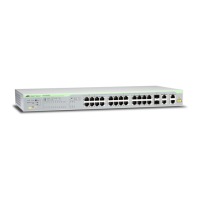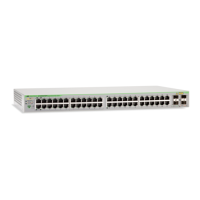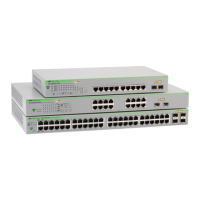Overview of Alarm System Introduction
8-3
Software Reference for SwitchBlade x3100 Series Switches (Alarms and Troubleshooting)
8.2 Alarm System Features
8.2.1 Overview of Alarm System
To understand the alarm system, the user should first understand the following:
1. Relationship of hardware and software components in providing service
For the delivery of services to succeed, both hardware and software components must work together, since
each provides some attribute of that service. These components can be in a hierarchy, with certain compo-
nents dependent on other components to function correctly. Otherwise the service may not work, or it
may be degraded. In many cases, components have a parent-child relationship to each other; a parent
must exist and be operational before a child can. A component may be a parent to child components and yet
also be a child to another component, which is its parent.
Note: This component hierarchy is based on the way components are dependent on each other, and may or
may not match how the components are physically or logically connected.
2. Potential customer impact on the loss of service of a component
Since the loss of a component may impact one, several, or even hundreds of customers, the system tries to
ensure that alarm indicators for components are appropriate. One key attribute of a component is whether
it is customer-interfacing or network-interfacing, since in most cases a network-interfacing compo-
nent has a greater impact on loss (or degradation) of service. Also, when a component is higher up in the
hierarchy (one that is a parent to other components), the impact of a loss of service will usually be greater.
3. The final status of components the user wishes to have
Most components have an Administrative State, an Operational State, and a Status, the result of
what the system has done with the component. (This is shown by placing the two states and status together
but separated by dashes, such as UP-UP-ONLINE). In most cases, the default for the SBx3112 switch is for
the components, when installed, to have an Administrative State of UP, and the system to try to make the
Operational State go to UP as well. The component can then provide service and go ONLINE if there are
no errors. The alarm system is based on this idea; alarms are produced when the user intends to put the
customer feature into service (with all related components UP-UP-ONLINE), but one or more components
do not function correctly.
Note: In some cases alarms are maintained (but with reduced severity) when the component is disabled; this
provides some history of the defect condition.
This third concept works with the previous two in that when a component fails (especially a card), the com-
ponents further down the hierarchy may no longer be able to provide service, yet they will not produce an
alarm since they are dependent on the parent component. These child components will then have an Oper-
ational State of DOWN and a status of DEPENDENCY. This is useful in isolating the source of the problem,
as explained below.
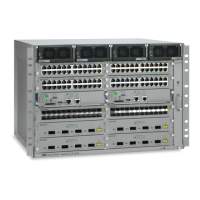
